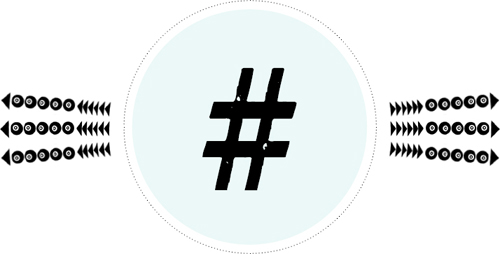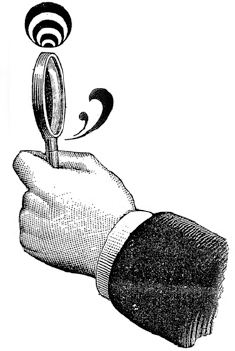
Like their inkjet forefathers, 3D printers are machines that create facsimiles based upon a template. But instead of spewing paper, these machines create copies of full-fledged objects, everything from cellphone cases to airplane parts. During a brief period of intense high-tech euphoria around 2009, it seemed like the 3D printer revolution might follow the same trajectory as the personal computer—leaping from obscure research vessel to ubiquitous machine. Optimistic futurists, high on their own hullabaloo, were predicting that desktop 3D printers would soon be found in every home, churning out full-size bespoke automobiles and backyard Eiffel Towers. The replicators from Star Trek were just around the corner.
That future still might come to fruition someday, but the personal printing revolution has mostly stalled, except for a small band of fervent enthusiasts who use their expensive desktop printers to produce fancy pencil holders in the shape of Julius Caesar’s bust. But just as the personal printing revolution is petering out, the industrial 3D printing revolution shows no signs of slackening. Among the accomplishments in printing trickery that are challenging our notions of ownership, identity, labor, biology, and creativity:
• A bioprinter has been used to create ear, bone, and muscle structures out of plastic. Kidney and brain tissue has also been printed for drug trials.
• The Culinary Institute of America has used a 3D printer to invent new foods.
• About a mile east of King Tut’s tomb in Egypt stands a full-size replica of the funky pharaoh’s resting place.
• After a motorcycle accident, a man in Wales had the bones in his face reconstructed via 3D printing.
• The Van Gogh Museum has created exacting reproductions of several paintings, including Sunflowers (1884). Realistic down to the cracks in the paint, the “Relievos,” as they’re called, have gone on tour around the world.
• Rocket Lab, a Silicon Valley–funded start-up, launched a 3D-printed rocket into space in May 2017.
• Trying to keep pace with destruction brought about by global warming, 3D printers are creating coral reefs in the Mediterranean, the Caribbean, and the Indian Ocean around Australia.
• The caves of Lascaux have been closed to visitors for half a century, but a 3D replica of the grotto and its paintings has been created nearby.
Despite these innovations, the most famous object to come from the 3D printing movement is likely a gun. Cody Wilson, a self-described “information anarchist” from Texas, released the blueprints for a printable firearm, which could be manufactured with any 3D printer, on the internet in 2012. Though the State Department demanded its removal, the template found its way onto illicit filesharing services. It was a killer app, but not the one the personal 3D printing movement needed.
SEE ALSO: GREEBLES; HUMAN CLONING; SHIP OF THESEUS; SYNTHETIC DIAMONDS
Some fears are more irrational than others. Falling off a jagged cliff sounds objectively terrifying, so a modest fear of heights (acrophobia) could be tantamount to bodily survival. Similar intense anxieties, like the fear of fire (pyrophobia) or of the dark (nyctophobia), might be hardwired into our brains, part of the atavistic circuitry of being a nervous human. Spiders (arachnophobia) and sharks (galeophobia) could—at least in theory—inflict pain, so anticipating their animalistic wrath makes some rational sense. Same goes for needles (trypanophobia), flying (aerophobia), and—sure, it’s a stretch, but—zombies (kinemortophobia). Most fears, if not precisely logical, are at least reasonably deducible.
Other fears make no goddamn sense. The aversions to mirrors (catoptrophobia) and beards (pogonophobia) sound suspiciously like the inventions of desperate think piece scribes, thirsty to disseminate their musings on self-love and hipster hate. But not even those zeitgeisty disorders occupy the top ranks of Most Irrational Human Fears. Among the phobic contenders, the most inexplicable insecurity might be the one in which we fret over a number. Because every fright is bequeathed its own moniker, we have even invented a word for the dread that envelops the number thirteen—triskaidekaphobia. If urban architecture were the gauge of measurement, triskaidekaphobia would be a pandemic, with American skyscrapers appearing the most panic-stricken. According to a study of apartments conducted in New York City in 2015, 91 percent of Manhattan buildings have skipped numbering a floor as the thirteenth floor.1 It is an indisputably strange superstition. A building cannot literally eliminate a floor, so the jump in stories can only be understood as a frivolous embellishment. Are we supposed to believe that everyone who lives on the fourteenth floor has somehow been duped?
But at this point, the urban legend can no longer be repealed. Fear of the thirteenth floor has been literally chiseled into our buildings—the cement and the circuitry. Just as buxom teens cannot abstain from camping in the woods of Jason Voorhees on a certain recurring Friday, real estate tycoons must persist in creating blueprints that skip an entire floor in their numbering system. The wheels of paranoia in motion, we cannot stop designing elevators without a button labeled 13. The thirteenth-floor urban legend is irretrievably embedded into that American philosophy that ranks tradition over rationality.
SEE ALSO: POTEMKIN VILLAGE; ILLEGAL PRIME NUMBER; NOT EVEN WRONG; VOMITORIUMS
Who you gonna call? Within a certain supernatural comedy, the emergency phone number for reaching a squad of exterminators is 555-2368. Those digits not only dial into a Ghostbusters hotline to report a Slimer but also work within many other fictional universes, where the exact same number reaches out to the Bionic Woman, Jim Rockford, the motel room in Memento, the Mod Squad, Kojak (office), Howard the Duck (home), and the family of the abductee in Close Encounters of the Third Kind. Pretty good for four random digits that, technically, break the telecom rules.
There is an actual entity that specifies what telephone numbers should appear in movies and television. According to the North American Numbering Plan Administration (NANPA—we’re back in reality now; that’s a real thing), fictitious telephone numbers are supposed to fall within a preset range. There are only one hundred numerals officially reserved for fiction—those 555 digits between 0100 and 0199. Because 555-2368 falls outside that range, dialing it nowadays might lead to someone actually picking up, depending on what area code you prepend.
Using 555 as a dummy prefix started in movies of the early ‘60s; the 2368 extension became an inside joke in the ‘80s. Though they are the most popular fictitious digits, plenty of other characters and places reside within the 555 Cinematic Universe: Agent Scully (1013), the Mike and Carol Brady residence (1212), Moe’s Tavern (1239), Buffy (0101), Seinfeld (2390), Kramer (3455), D. J. Tanner (8722), Alf (7787), the Peach Pit (4352), Lloyd Dobler (4312), Laverne and Shirley (9988), and the Bates Motel (9130).2 In the Last Action Hero, a kid tries to convince Schwarzenegger that they are living in a movie by arguing there are only 9,999 available 555 phone numbers, not nearly enough to account for the population of Los Angeles. “That’s why we have area codes,” counters Schwarzenegger, handily tamping a potential cinematic universe meltdown.
During the theatrical release of Ghostbusters, director Ivan Reitman set up 1-800-555-2368 with a recording of Bill Murray and Dan Aykroyd in character. When it started to receive a thousand calls per hour on his bill, he shut it down. At the time of this writing, the number resolves to a Kafkaesque message for a “nonworking extension for Corporate Telecom.”
SEE ALSO: DOE, JOHN; THE FOURTH WALL; ILLEGAL PRIME NUMBER; LOREM IPSUM; NULL ISLAND; TOMMY WESTPHALL UNIVERSE

1 The study of buildings with more than thirteen floors was performed by CityRealty. But real people seem less concerned with the number than do real estate developers. According to a 2007 Gallup poll, only 13 percent (naturally) of Americans say they would be bothered by a thirteenth-floor room assignment in a hotel.
2 That last one is found in Psycho III, from 1986. Of course, there’s a detailed website that lists hundreds of fictional numbers, but it’s an old obscure Earthlink address with tildes in its URL, so as a sign of how far we have come since the phonebook, instead try googling “555-LIST” to find it.